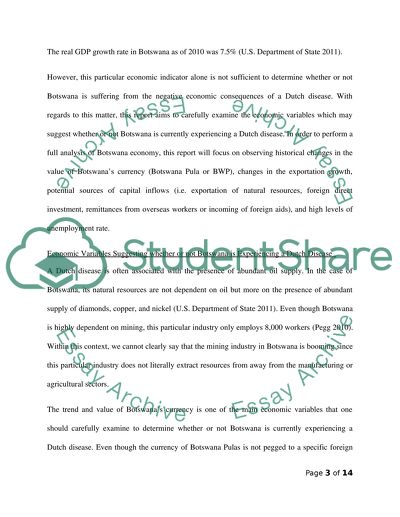Cite this document
(“Botswana and a Dutch Disease Essay Example | Topics and Well Written Essays - 1500 words”, n.d.)
Botswana and a Dutch Disease Essay Example | Topics and Well Written Essays - 1500 words. Retrieved from https://studentshare.org/macro-microeconomics/1444265-2-has-botswana-experienced-a-dutch-disease-what-empirical-evidence-suggest-it-has-or-hasn-t-how-would-you-perform-a-full-anal
Botswana and a Dutch Disease Essay Example | Topics and Well Written Essays - 1500 words. Retrieved from https://studentshare.org/macro-microeconomics/1444265-2-has-botswana-experienced-a-dutch-disease-what-empirical-evidence-suggest-it-has-or-hasn-t-how-would-you-perform-a-full-anal
(Botswana and a Dutch Disease Essay Example | Topics and Well Written Essays - 1500 Words)
Botswana and a Dutch Disease Essay Example | Topics and Well Written Essays - 1500 Words. https://studentshare.org/macro-microeconomics/1444265-2-has-botswana-experienced-a-dutch-disease-what-empirical-evidence-suggest-it-has-or-hasn-t-how-would-you-perform-a-full-anal.
Botswana and a Dutch Disease Essay Example | Topics and Well Written Essays - 1500 Words. https://studentshare.org/macro-microeconomics/1444265-2-has-botswana-experienced-a-dutch-disease-what-empirical-evidence-suggest-it-has-or-hasn-t-how-would-you-perform-a-full-anal.
“Botswana and a Dutch Disease Essay Example | Topics and Well Written Essays - 1500 Words”, n.d. https://studentshare.org/macro-microeconomics/1444265-2-has-botswana-experienced-a-dutch-disease-what-empirical-evidence-suggest-it-has-or-hasn-t-how-would-you-perform-a-full-anal.


